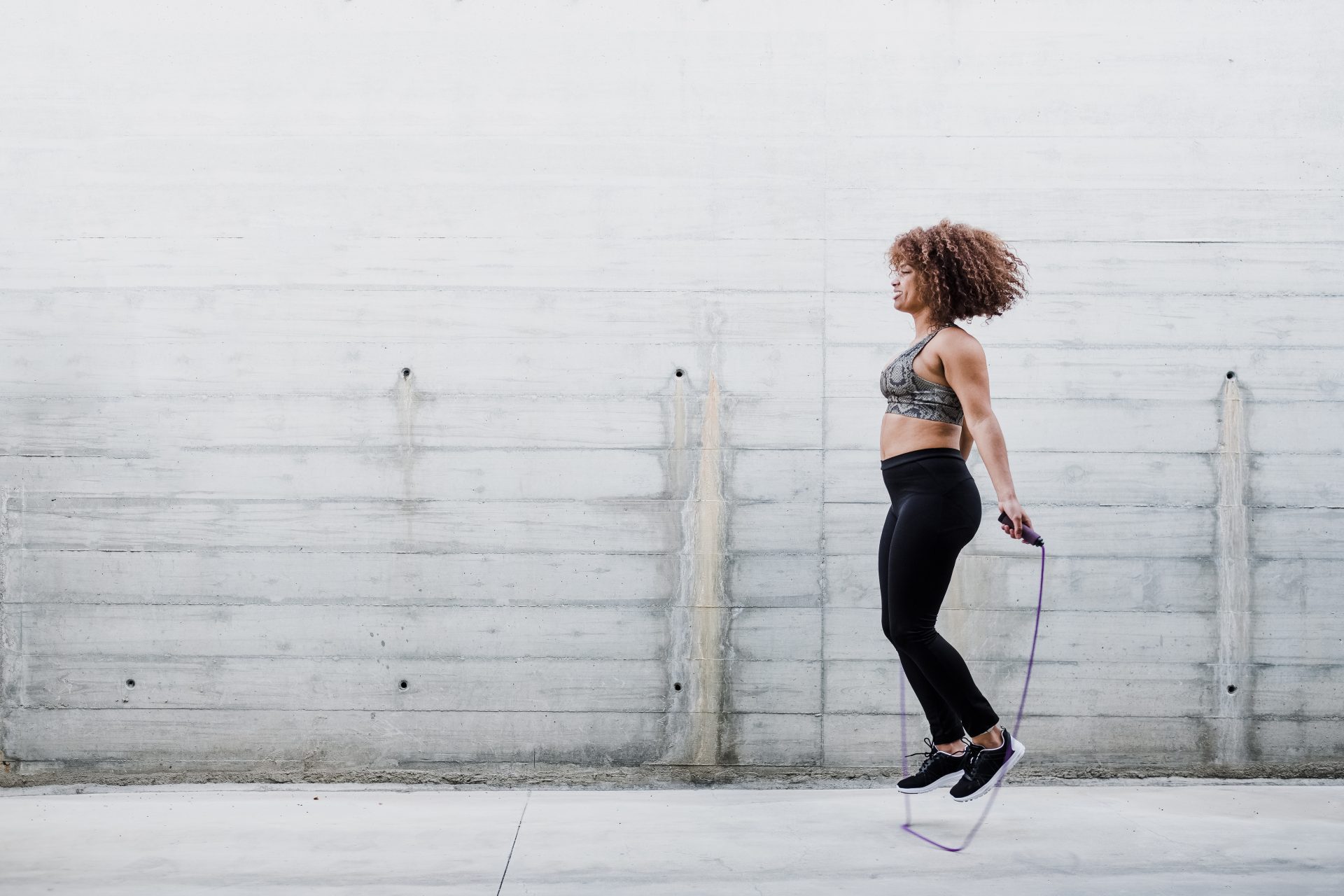This January, we’re on the search for quick, accessible hacks to kickstart 2023 in the strongest way possible. Today’s cardio kickstarter: how to improve cardio fitness without running.
Within the fitness world, you’ve got three camps: the fit ones, the strong folk and, somewhere in the middle, the jacks of all trades (but masters of none). Super-fast marathoners or cyclists that struggle to crack open a jar of jam and mega-powerlifters who can’t run for a bus. Clearly, if you want to be healthy and enjoy a decent level of independence as you get older, you need both.
But while there are plenty of ways to build body strength beyond lifting weights (such as pilates, yoga, resistance bands and resistance machines), cardio often feels a bit more limited.
If you hate running or can’t jog for whatever reason, you might think that you’ll never be quite as fit as you could be.
You may also like
“My fitness tracker helped me learn to love interval running”
Laura Hoggins, a PT, author and presenter, leads a series of strength classes on the FIIT app. If I’m working from home, I’ll often jump on the app to do one of her classes because, despite the fact that they’re all about building foundational strength, they feel like cardio. Within minutes, you’re sweating, and by the final burpee, you’re basking in endorphins. It feels like your heart is getting a real workout, as well as your quads, biceps or whatever muscle group the session is focusing on.
“For years, the whole ‘cardio v strength’ argument has been a bit like Romeo and Juliet – you’ve got to pick a side. In reality, of course, it’s really important in the pursuit of health and wellness to do both,” she tells Stylist. The bit you do have control over, however, is “how much you do and what you focus on, depending on your goals and what you enjoy”.
Benefits of cardio training
If you avoid running out of fear that cardio can interfere with strength gains, then you need a reality check. As Hoggins explains, developing cardiovascular fitness has a whole host of benefits, including:
- Decreasing the risk of cardiovascular disease
- Making your heart stronger
- Lowering resting heart rate (“so you can pump blood more efficiently around the body”)
- Improving blood pressure

Is ‘strength-cardio’ really a thing?
As I mentioned at the start, I’m far more likely to pick a HIIT-type strength session than something slow and heavy. And it seems to me that a lot of boutique gyms are trying to offer a cardio-strength combo in lieu of ‘proper’ weightlifting.
But while the adage that “my cardio is moving weights faster” might be true to a certain extent, Hoggins insists that while resistance training can have some positive impact on cardiovascular fitness, it’s unfortunately not as much as you may think (or feel, as your heart rate increases during a heavy or challenging set).
In other words, those sweaty HIIT-focused strength sessions aren’t challenging your heart and respiratory system enough. They’re fun, they get you moving and undoubtedly help you to get stronger, but you won’t reap the same benefits that you would from a dedicated cardio workout.
The good news, she reassures me, is that there are ways to improve your cardio fitness with some resistance training, using peripheral heart activation (PHA) or, as she calls it, ‘uppers and lowers’.
“By pairing an upper body resistance movement with a lower body exercise, you can move from each exercise quickly – minimising rest and ‘shunting’ blood flow around the body to support the demand of the stimulus.” This, she explains, will also help to slightly improve your VO2 max (a key indicator of fitness level) but it isn’t optimal for that specific goal.
You may also like
Wondering what the VO2 max rating on your fitness tracker means? Here’s why it’s an important measure of your health
3 ways to dramatically improve cardio fitness
Go for lower-impact cardio exercise
“The best way to improve your cardio fitness is by using cyclical work with a higher pace of movement and low muscular demand to create metabolic stress,” says Hoggins. All that means is that you want to be moving faster without putting too much pressure on your muscles. That’s why running is so good (sorry!). You move cycle through the legs at a faster pace and although running obviously does put the quads, calves, hamstrings under pressure, there’s no external load. More lower-impact options include cycling, rowing, ski-erg and swimming.
That kind of work, Hoggins explains, “actually has lower interference with strength gains” than running, because they tend to challenge a certain part of the muscle rather than demanding the muscle work through its full range.
Zone 2 training
And that means that we might possibly last longer or endure more of those lower-impact forms of cardio than running. She continues: “There’s a thought in the fitness industry that we should always be pushing for max effort in our cardio workouts – hitting the red zone is always the goal.”
But Hoggins suggests we should be aiming to work in zone 2 (about 60-70% of your max heart rate), as that’s the perfect range for developing your engine. “It may be boring but spending time doing moderate work at that rate will build your aerobic capacity… if you can get it done two or three times a week for 20-30 mins (just don’t tell the high-intensity boutique gyms though).”

Track your heart rate
Fundamentally, cardio conditioning is all about your heart rate – and that’s what we should focus on when it comes to improving fitness. And one way you can measure that, as mentioned before, is via your V02 max. When you improve your VO2 max, you’re essentially increasing your aerobic capacity – ie how efficiently you’re getting moderate work done.
If you did start running, you might think that cutting seconds or minutes off your 5k PB would be the best sign of improved cardiovascular fitness, but Hoggins says an even better marker would be to see how your average heart rate varies over time. If you manage to run a 30-minute 5k in January and do it in exactly the same time in March but with a lower average heart rate, that’s a sign you’ve got fitter, your heart is working more efficiently and the body is experiencing less stress. That logic applies to spin classes, swim sessions, hikes and other non-running activities.
You may also like
Why ‘zone 2’ exercise might be the best cardio workout
Tracking recovery
That’s where wearing a fitness tracker can be handy. While they vary from brand to brand (and shouldn’t be taken as gospel), they can be handy for understanding how your heart rate responds to various exercises. Hoggins says she uses a Whoop to focus on recovery and strain, but most smartwatches also include a heart rate tracker.
“Not only can we look at our heart rate during exercise, but we can also assess how fast we’re recovering. The speed at which you’re able to get your heart rate back to zones one or two is a great indicator of fitness.” And by looking at your tracker, you’ll be able to see if your stats are broadly going in the right direction (resting heart rate being low, heart rate variability being high). If they’re not, it’s time to look at how well you’re resting.
See, cardio is so much more than running!
Images: Getty
Source: Read Full Article